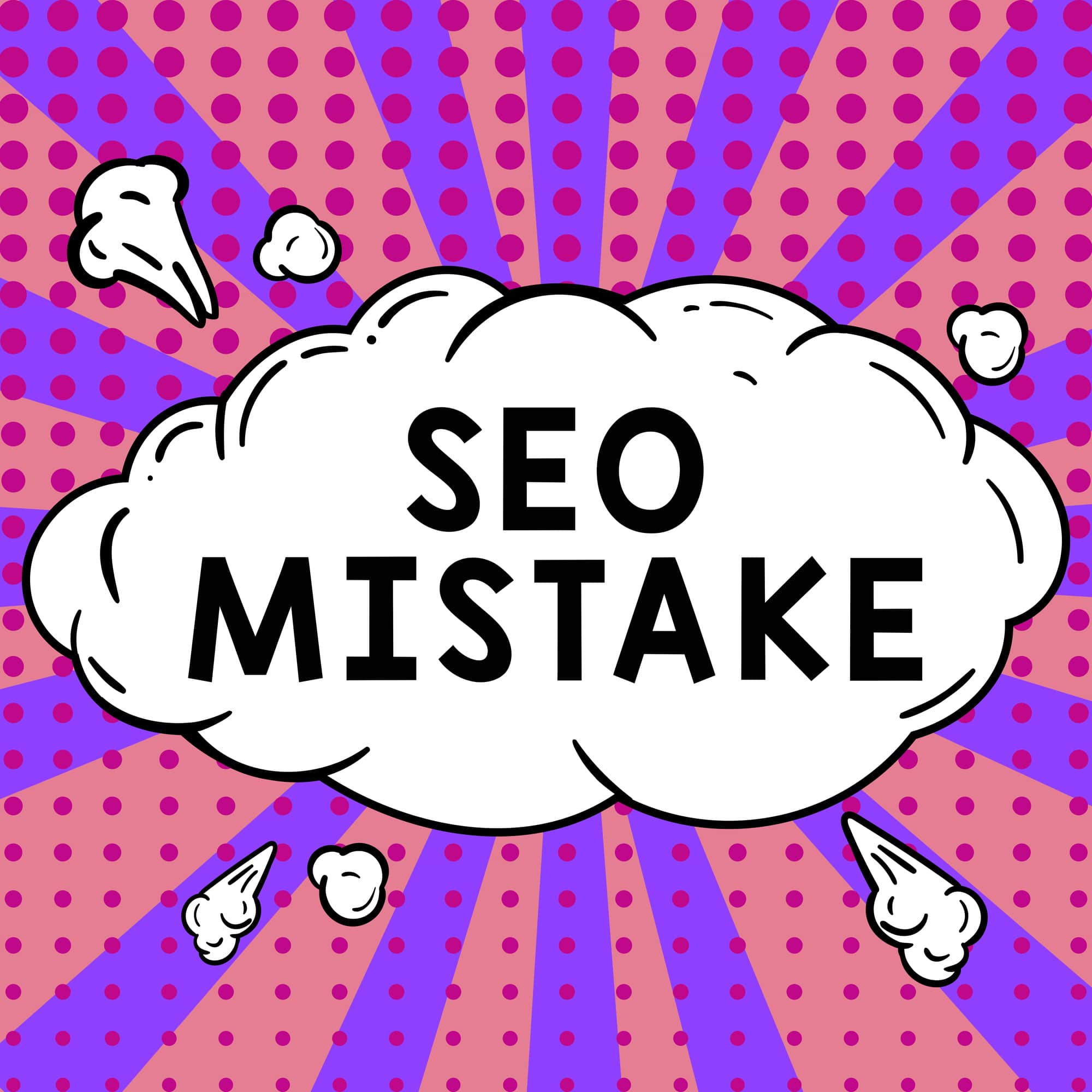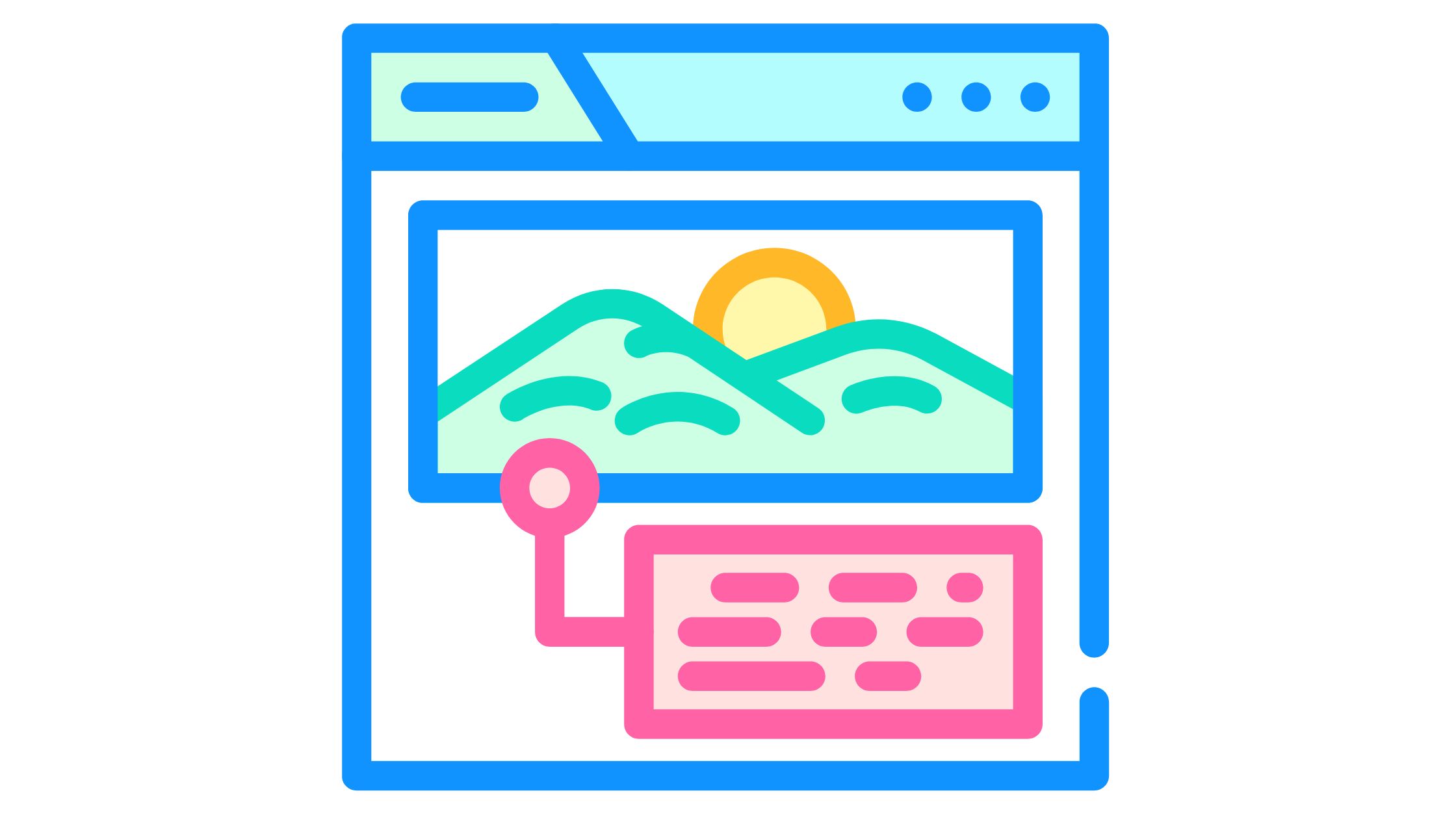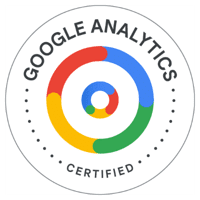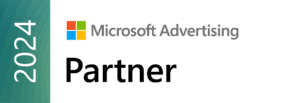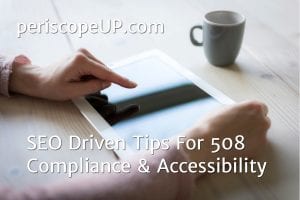 A known Google ranking factor the last 5 years, accessibility has grown significantly in importance over the last year. What is accessibility, and what does it mean to be 508 compliant? Web accessibility means that your website, tools, apps, or technologies are designed and developed so that people with disabilities can use them. Compliance comes from the 508 section of the Rehabilitation Act of 1973 requiring federal agencies to provide software and website accessibility to anyone with disabilities.
A known Google ranking factor the last 5 years, accessibility has grown significantly in importance over the last year. What is accessibility, and what does it mean to be 508 compliant? Web accessibility means that your website, tools, apps, or technologies are designed and developed so that people with disabilities can use them. Compliance comes from the 508 section of the Rehabilitation Act of 1973 requiring federal agencies to provide software and website accessibility to anyone with disabilities.
Even though the 508 section refers to federal agencies, there have been lawsuits and fines imposed on the smallest of companies for failing to meet these standards. Every person deserves the right and ability to use your website. This doesn’t mean you’ll be sued if you’re not compliant, but it’s not impossible either.
periscopeUP makes your website accessible. Contact us today.
More Influential Than The Law?
Legally, most websites and companies are not required to be 508 compliant. However, Google wants you to be, and it’s part of their ranking algorithm. What does it take to make Google happy and give all users the ability to access your website?
Even though there’s plenty that can be done to make your website compliant, we selected the following tips because they help all users – not just ones with disabilities. All the methods outlined below tend to benefit your overall SEO results.
- Alt tags are a must for images
- This tag is by far the most important for accessibility. Screen readers and other tools used to scrape and comprehend your website to share with a user cannot see or understand an image. The only thing standing between your image and a user with accessibility needs is the alt tag,
- Ability to quickly and easily navigate all sections of your website and page content.
- Using landmarks in your html markup can help explain sections and allow accessibility tools to quickly move to sections the user wants to read, see, or find.
- Use the role attribute in your html markup examples: role= ”navigation”, “article”, “contentinfo”, or “search”. Each should be used for an individual area.
- Expressing the language of your content is important
- Using the lang attribute on the html element will allow users that do not speak English to quickly know if they need to use a translator app or if your site offers alternative.
- Use semantic headings and structure markup
- These are the H tags. Putting content into <section> opening and closing tags allows tools to scan and break down your web pages into readable content.
- These are particularly useful for blind users so that the dictation tools can read outloud the content in the order you would want a user to hear. If you did not do this a title for a section could blur together with paragraph or form fields or image alt tags making the user very confused.
- Ensure links are marked up correctly
- The :focus indicator is an important indicator to be defined. It helps screen reader apps to navigate your content. It also allows for limited mobility users to use their keyboards instead of a mouse to quickly tab through buttons, fields, and sections of your web site and pages.
- Ensure your links are underlined. This helps users with impaired vision notice the links from your content.
- Have a “skip to main content” link when a user starts to use keyboard shortcuts. This allows keyboard only users to quickly jump to your content instead of having to tab through all the navigation links and other focus items above your main content area.
- Forms must be accessible to ensure you get leads
- Screen reader or keyboard only users are the ones that will run into the most issues.
- Having a logical organization to your forms is the key to success.
- Video/Audio embeds should have captions, transcripts and audio descriptions
- From an SEO perspective, your videos and audio files should already have transcripts and be marked up in schema. You should also give your user the option to view/open the transcript in some way. This can be done using an accordion or button to show hidden text. If you do this, be sure to mark up the button and attributes to explain to screen readers where the transcript lives.
- Color and Contrast should be set correctly for users with visual disabilities.
- Websites with black/dark background and white/light text are difficult for older users to read or navigate.
- Checking your color and contrast is the best way to ensure you are accessible.
Test To Make Sure
You should also test all the changes you made using an accessibility checker. Some are free and others are paid. We recommend the WAVE tool powered by WebAIM. This tool provides you with feedback, and it also has a large resource base to help you fix any trouble spots.
Want assistance with implementing accessibility best practices? periscopeUP can help. Contact us to make your website compliant and accessible to all users.
